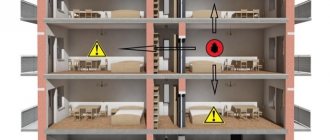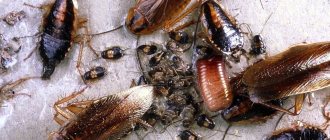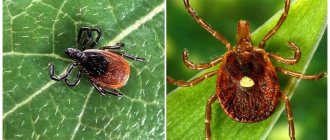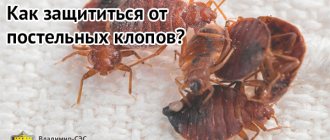Where to go if there is a mouse in the entrance.
They destroy structures. They cause damage to home farming. Finally, they can simply bite, ruin your mood, and scare you. Who would like a rat to live in an apartment if it is not decorative? What can we say if rats take up residence in the sewers! Due to the fact that these cunning animals, adapted to various living conditions, are excellent swimmers who can hold their breath, they travel freely through the sewer, easily clinging to the uneven surface of the pipes with their paws. They can “look at the light” by climbing through pipes from the basement of a house in search of food, when the territory is overcrowded, when frost sets in, and also when fleeing from persecution (deratization). Important! Basement rats from the sewer gnaw through elegant, lightweight plastic pipes and corrugations that do not pose any barrier to strong teeth. Having discovered the spy, you need to slam the toilet lid.
How to get rid of rats in the entrance
After all, mice and insects climb up risers, interfloor ceilings and ventilation from basements. They create unsanitary conditions and cause fear along with disgust.
If the basement is dirty, damp and dark, these are factors that contribute to the appearance of “uninvited tenants” there, as well as an unpleasant odor. We will tell you how to deal with these problems and discuss the cleanliness of the walls in the entrance. Rats in the entrance: where to go? If cockroaches or rodents suddenly appear in the entrance, immediately contact the management company.
Smell from the basement
An unpleasant smell from the basement is periodically present in every apartment building. There can be many reasons for this: from a sewer break to a deceased animal. Not only aesthetic feelings suffer from such a “fragrance,” but health can also suffer.
The basement should be dry and clean. There should be no unpleasant odor. This is written in the Rules and Regulations for the Technical Operation of Housing.
The following video talks about how to deal with communal tyranny when the smell from the basement is very bothersome:
Where to file a complaint
As in the previous case, the algorithm of actions in the event of an unpleasant odor from the basement is standard. Contacting your house management company doesn't help? Write an application to the housing inspectorate, SES and Rospotrebnadzor. Moreover, it is advisable to write not one statement signed by all residents collectively, but according to an application from each resident. This works much more efficiently.
The text of the complaint itself looks something like this:
- in the “header” we write where, from whom and to whom. We indicate the contact telephone number and email address;
- then we write “a statement of violation of the rules on the maintenance and repair of residential buildings”;
- in the text we accurately and clearly indicate the reason for the request along with the address where the incident occurs;
- we ask the State Housing Inspectorate employee to take action and punish those responsible;
- we wait until the utility workers eliminate the cause of the smell;
- We contact the prosecutor's office, the court and the municipality if contacting the supervisory authorities does not help.
Below you will find a sample application for a smell from the basement, and you can also use it.
Sample application for smell from basement
Sample application for smell from the basement - 1
Sample application for smell from the basement - 3
Sample application for smell from the basement - 2
Sample application for smell from the basement - 4
List of steps
A step-by-step description of measures to curb the sloppiness of housing office employees:
- writing an application to supervisory authorities;
- sending it to the inspector via registered mail with notification;
- waiting for a decision within thirty days;
- After the “utility workers” are given the removal order, they have forty-five days to put the basement in order.
And remember, if these measures do not help, feel free to contact the judicial authorities. You will certainly win the case.
Don’t know what to do if teenagers wrote on the walls in the entrance? We'll tell you!
Where can I complain about mice in my apartment?
Your procedure should be as follows:
- Prepare an application to your management company and request deratization and disinfestation in the text of your application. The application is drawn up in 2 copies in free form; in such cases there is no unified application form;
- In your application, you need to refer to paragraph 3.4.8 of the Decree of the State Construction Committee of the Russian Federation dated September 27, 2003 No. 170, as well as paragraph 11 of the Rules for the maintenance of common property in apartment buildings, and paragraph 1.8 of the Rules and Standards for the Technical Operation of the Housing Stock. The paragraphs of the regulatory legal acts that I have listed state that the maintenance of common property in an apartment building presupposes and includes cleaning and mandatory sanitary and hygienic cleaning of common areas.
If the management company hesitates
You wrote a statement, a month has passed, but rats continue to attack your entrance. The situation is unpleasant, but this happens often.
The fact is that the management company reviews the residents’ application and is obliged to take appropriate measures within a month . But during this time, rodents can multiply and completely lose fear.
In order not to endanger their health and not spoil their mood by encounters with rodents, residents negotiate with their neighbors and call a specialist – an exterminator – on their own. We work seven days a week and seven days a week and are ready to clear the entrance of rats at any time to restore you to a feeling of safety in your own home. In addition, we provide a full package of documents about the work performed. With these documents, you will be able to invoice the management company in court and reimburse the costs of pest control.
To speed up the fulfillment by utility services of their duties to clean the surrounding areas of rodents, you can contact the Sanitary and Epidemiological Station, Rospotrebnadzor and the State Housing Inspectorate.
Mice in the apartment, where to go?
Be sure to find out how to deal with rats that died from poison or were caught in traps. It is best if the employees of the rat control company remove animal carcasses themselves.
They should inform you about the guarantees of their work and guarantee. Independent fight against rats in the entrance. Independent fight against rodents in the entrance is possible only when you have found their habitat, and it is available for treatment or installation of traps.
Please note that you will need special clothing and protective equipment to enter rat territory. In those places where pests live and nest, there is a lot of their droppings and food debris, which can be sources of dangerous infection.
Think in advance about whether you will poison the rats or prefer to lure them into traps and release them.
Existing methods of control
Not everyone has the patience to wait a month until the Housing Office deigns to take action (at best). What can you do on your own?
The ratcatcher cat is expensive
- Get a cat, or even better, a cat and a dog. These natural enemies of the rat fraternity do an excellent job of reducing the population.
- Place rat traps and place poisoned baits. Here you need to be careful if there are pets in the house.
- Use ultrasonic repellers that force rats to leave the apartment under the influence of ultrasound.
But all these methods will be ineffective if you do not maintain cleanliness in common areas and leave ways to enter the building. And understand that no matter how careful and cunning these intelligent animals are, humans must always be at the forefront in the fight against them.
Check out articles on similar topics
- Ways to fight rats
- DIY rat traps
- Rats in the chicken coop and how to deal with them
- We catch a rat in the house in various ways
Comments
leave a comment
If there are rats running around in your yard, complain to Rospotrebnadzor
Professional control of rats in the entrance Thanks to special organizations that deal with pest control, the fight against rats can go quickly and unnoticed by you. The residents of the house in whose entrance there are rats will only be required to maintain cleanliness and order, otherwise the rodents will come again.
The first step towards getting rid of rats should be to contact a company that offers pest control services. It can be found on the Internet, and they will help you clarify prices when you contact the sanitary and epidemiological station in your region.
Professionals will offer you several ways to solve the problem of the presence of rats in the entrance. From them you can choose the one that suits you and your neighbors.
The use of poisons and rodenticides can become dangerous not only for the rodents themselves, but also for people and pets. An alternative to these methods is traps.
"Harmful" rats
Rats in the basement of an apartment building are a direct threat to the health of all its residents. The greatest harm from them is the spread of dangerous diseases, often resulting in death. Infections caused by rats are called zoonotic.
Rats in the house can be detected by apartment residents on any floor
In this chain we can highlight:
- leptospirosis;
- giardiasis;
- plague;
- rabies;
- tularemia;
- encephalitis;
- toxocariasis;
- streptobacillosis.
The influence on a person is not limited to this. Rats spoil cereals and grain. They destroy structures. They cause damage to home farming. Finally, they can simply bite, ruin your mood, and scare you. Who would like a rat to live in an apartment if it is not decorative? What can we say if rats take up residence in the sewers! Due to the fact that these cunning animals, adapted to various living conditions, are excellent swimmers who can hold their breath, they travel freely through the sewer, easily clinging to the uneven surface of the pipes with their paws. They can “look at the light” by climbing through pipes from the basement of a house in search of food, when the territory is overcrowded, when frost sets in, and also when fleeing from persecution (deratization).
Important! Basement rats from the sewer gnaw through elegant, lightweight plastic pipes and corrugations that do not pose any barrier to strong teeth. Having discovered the spy, you need to slam the toilet lid. It would be a good idea to immediately pour a bucket of boiled water, a caustic sewer cleaning solution, bleach, bleach, and “White” into it. But this is a local measure. Where is the guarantee that in a day or two the rats will not follow the beaten path again?
Unsanitary conditions in residential premises
If rats and other rodents are running around in your entrance, then your management company is already violating:
- Articles 161 and 162 of the Housing Code of the Russian Federation;
- Clause 10 of the Decree of the Government of the Russian Federation of August 13, 2006 N 491;
- Clause 3.4.8 of the Resolution of the State Construction Committee of the Russian Federation dated September 27, 2003 No. 170.
Indeed, on the basis of clause 3.4.8 of the Resolution of the State Construction Committee of the Russian Federation dated September 27, 2003 No. 170, the management organization must be guided by sanitary standards, as well as rules for servicing the housing stock, according to which the management organization must regularly carry out deratization and disinfestation aimed at exterminating insects and rodents in common areas such as basements, crawl spaces and attics. Solve the problem Who is not familiar with unsanitary conditions in apartments, entrances and adjacent areas of houses? Deposits of garbage, mold, the smell of sewage and, naturally, mice and rats, which, unlike people, feel at ease in such conditions. However, despite the blatant violations, the housing and communal services do not heed your requests? What to do if homeless people have settled in your building or your neighbors are illegal immigrants? Complain about unsanitary conditions to the management company or higher government authorities.
Rats in an apartment building - where to go, how to control rodent control
September 11, 2020
Rats in an apartment building - where to go
refer to how deratization is carried out
Almost every resident of apartment buildings has at least once in his life encountered the presence of cockroaches or rodents in his apartment. But this does not mean that people are sloppy, but, as a rule, that employees in the housing and communal services sector are dishonest. After all, mice and insects climb up risers, interfloor ceilings and ventilation from basements. They create unsanitary conditions and cause fear along with disgust. If the basement is dirty, damp and dark, these are factors that contribute to the appearance of “uninvited tenants” there, as well as an unpleasant odor. We will tell you how to deal with these problems and discuss the cleanliness of the walls in the entrance.
How to drive away rats?
Today, both sanitary services for exterminating rats and homeowners themselves can drive out pests. In most cases, means and methods are used to ensure that the negative impact on the environment is minimized. If a rat appears in an apartment, even children know what to do and where to go. And yet, the popularity of independent pest control remains high for various reasons.
After all, many owners simply do not perceive the presence of rodents as a serious problem. In this case, in the 21st century, completely wild means are often used, such as arsenic or other dangerous poisons obtained through acquaintance. However, there are dozens of ways to eliminate pests or scare them away from apartment premises that do not involve the use of chemicals and toxic substances.
Reasons for the appearance of rats in the basements of high-rise buildings
This closeness of rodents to humans is explained by large food reserves. The gray rat is a predator; more than 60% of its diet consists of food of animal origin. At the same time, it is a very adaptive creature: when it finds itself in an urban environment, the rat eats absolutely everything it finds.
They are attracted to garbage dumps under houses, working garbage chutes, and dampness in basements. Papers, food packaging, scraps and other waste are the optimal breeding ground for millions of rat armies.
Rodents penetrate high-rise buildings without problems: neither concrete nor fear of humans stops them. Rodents move through ventilation shafts, drainage and sewer pipes and in the space between them. They are able to enter a home through any gap, and if there is none, they will gnaw out a passage in the floor, insulation, or concrete floors.
If rats are already infested in the basement, they will soon crawl into residential apartments, gnaw through countless passages, occupy edible supplies, and, quite possibly, introduce some dangerous disease.
•Try to remove the rodents yourself, using local means of control (poison or set traps);
•Contact a special pest control service;
•Write a collective application to the Housing Office and wait for the problem to be resolved.
It is effective to fight rodents on your own only within a private building. In apartment buildings, it is much more difficult to exterminate rats: as soon as they feel uncomfortable in one basement, they immediately migrate to another, or even move to another house.
To solve this problem, it is necessary to restore perfect order in the basement of the house and around it. Housing and communal services workers will do this more efficiently and quickly. Moreover, the standards for the technical operation of housing stock and SanPiN state that their responsibilities include:
•Ensuring all sanitary standards guaranteeing safe living for residents of the house (garbage removal, regular inspection of problem areas);
•Preventing the breeding of rats and mice (garbage removal, installation and inspection of protective metal mesh on technical floor windows, ventilation shafts, sewer and water supply pipes);
•Timely destruction of rodents using special poisons, gels, ultrasonic repellers, traps.
Colonies of rats occupying basements are clear evidence that the housing and communal services are not coping with their responsibilities. The housing office needs to be notified of this violation: a statement is drawn up, signed by all residents of the house, which describes the problem in detail.
If the yard is cluttered with household or construction waste stored by neighbors, law enforcement agencies, together with dissatisfied residents, draw up an act. This document stipulates that violators of the order are obliged to either remove the garbage on their own, or pay a fine, and the management company will clean it up.
Due to their structure, rats' teeth remain sharp throughout their lives.
If the sanitary situation in a residential building is not entirely favorable, then with a high degree of probability rats may appear in it. Household waste is an excellent source of food for them, to which they are unpretentious. They live mainly in basements, where it is always dry and warm, they can wait out the winter, and there is a constant source of drinking water.
Rats are dangerous primarily because they are carriers of diseases such as leptospirosis, plague, tularemia, pseudotuberculosis, and erysipelas. They create a pathogenic environment that can attract other human “neighbors”: cockroaches. These insects, in turn, are the causative agents of cholera, typhoid fever and various intestinal infections.
On a note! Severely hungry rats are able to forget about the fear of a person and even bite him, thereby causing blood poisoning. There are known cases when a person was attacked by a large flock of hungry rats. Another disadvantage of being next to them is damage to property.
“Intelligent” rodent: what is it like?
•Mostly people are bothered by the gray rat (pasyuk). Belongs to mammals, order of rodents. A synanthropic animal that has occupied all territories suitable for its habitat. It is considered the largest predator of its species in the vastness of the Russian Federation.
•The length of her body is from 17 to 25 cm, the tail itself is 19 cm in size. The fur coat is a beautiful gray shade. The fur is heterogeneous. It varies especially on the back and abdomen. There are exceptions - black rats.
•Pasyuk leads a nocturnal and evening lifestyle. Settles near (or in) a person’s home. Can exist in a group, alone or in a colony.
•Each group has its own “sphere of influence,” a territory marked with a special pheromone.
•Rats have nests that they protect. The path to the nest, wherever it is, is unmistakably found.
•A route once laid, away from heavy traffic (along pipes, baseboards, along walls), is immediately remembered and does not change.
•The basement rat feeds on food rich in animal proteins. Does not neglect waste and fodder. They attack young birds and animals.
•The rodent constantly needs food, on average 25 g per day and water (35 ml). Without food, rats die after 4 days, while without water, death occurs even earlier.
•The most formidable weapon of these animals is their teeth, which do not stop growing throughout their lives. They chew through wires and soft metal objects made of tin, copper, and lead.
•The life cycle is 3 years at best. But due to the high mortality rate of young shoots, only 5% survive to this age. The remaining individuals have a life span of about one and a half years.
Security measures
Rats and rodents in general are quite cautious animals, capable of hiding and camouflaging for a long time. However, real cases of collisions with pests in a city apartment are few and far between. You can detect their appearance by paying attention to indirect signs:
•increasing the physical activity of rodents at night;
•detection of teeth marks on the surface of furniture;
•traces of rat paws on the floor or table;
•damage to concrete structures, wiring;
•detection of rat passages in places where pest activity occurs.
If one of these signs is observed in the apartment, it is worth showing caution from the very beginning and taking care of individual safety measures.
The first thing you should do is pay attention to the ways pests enter the apartment. Most often we are talking about sewer systems - through them rodents enter houses in new buildings. Here, a reasonable precaution would be to install lattice inserts on all large-diameter pipeline inlet elements to prevent the appearance of rodents.
On the first floors, a reasonable solution would be to carefully concrete all detected cracks and gaps. If pests escape from the garbage disposal, you can simply weld it in the apartment and take the waste into containers. If possible, walls and floors are reinforced using metal mesh structures - they can be fixed under decorative trim made of sheet materials.
You need to complain about the appalling situation consistently.
•First, an application is made to the Housing Office
•Failure to take action leads to the next step: writing a statement, preferably with the signatures of all residents, and delivering it to the housing office.
•Law enforcement officers and residents draw up a report against neighbors who litter the yard. This document obliges you to either remove the garbage or pay a fine.
Creating unsanitary conditions in the back rooms of a store and ignoring preventive measures on the part of its management threatens with sanctions after citizens file a complaint with the same Rospotrebnadzor. In particular, to the imposition of a fine, according to the Code of Administrative Offenses of the Russian Federation. Existing methods of control Not everyone has the patience to wait a month until the Housing Office deigns to take action (at best).
What can you do on your own? The ratcatcher cat is expensive
•Get a cat, or even better, a cat and a dog. These natural enemies of the rat fraternity do an excellent job of reducing the population.
•Place rat traps, place poisoned baits.
Citizens have the right to apply personally, as well as send individual and collective appeals, including appeals from associations of citizens, including legal entities, to state bodies, local governments and their officials, to state and municipal institutions and other organizations entrusted with the implementation of publicly significant functions, and their officials. Part 1 of Art. 2nd Federal Law of May 2, 2006 N 59-FZ “On the procedure for considering appeals from citizens of the Russian Federation” Good evening, I have the same problem, I live on the first floor, one apartment on the site, next to the front door there is an electrical panel and there rats live. In general, they go there for their own needs, in general there is unsanitary conditions, the housing office does not take any action.
How does a rat get into houses?
Rodents are distinguished by a high level of intellectual development - which is why, before looking for an effective method or means for catching them, it is worth understanding where pests can come from in the first place. Domestic rodents can appear indoors for various reasons. But their appearance usually occurs exclusively through certain paths.
From basements, pests can enter through doors and windows, as well as through cracks in floor slabs. In addition, gaps in places where sewer pipes are laid, as well as any other technological openings, including ventilation ducts, as well as garbage chutes, which in some houses are equipped directly with access to the kitchen space, pose a danger.
What methods of struggle exist?
At the beginning, rats appear in the house on the first floors. This is explained by the location of garbage disposals, various supermarkets and catering establishments on the lower levels. These organizations do not have the right to ignore citizens’ reports of rats in their homes and are obliged to take all actions to get rid of them.
The fine for detected rats can reach 20 thousand rubles
Rats in the entrance hall are caused by poor garbage disposal and poor-quality cleaning of garbage bins with disinfectants, or even the absence of cleaning at all. So where should you go if there are rats in your house? In this case, you must write a corresponding statement to the management company.
Properly carried out deratization of the house allows you to get rid of rodents forever. This is achieved through daily garbage removal, washing garbage bins with special disinfectants, covering ventilation shafts with metal grilles, and placing a variety of traps and poison baits.
What could have contributed, what points to pay attention to if a rat was nevertheless noticed in the apartment and what to do to expel the uninvited guest.
Let's start by looking at the reasons:
When rats appear in an apartment, extermination measures must be started immediately, otherwise wooden products may be damaged. Thanks to their amazing fertility (one female gives birth to up to 20 rat pups), after a short period of time, entire colonies can populate your home.
Residents of the house may also be concerned about the question of where to go to complain about the dishonest performance by housing office employees of their functions: timely garbage removal, cleaning the territory, preventing pests from appearing in the house.
So, if the housing office ignores its duties, a complaint is drawn up against them and sent to Rospotrebnadzor, the Sanitary and Epidemiological Station or the Prosecutor's Office.
Within a month from the date of registration of the application, deratization and a full range of measures to prevent the re-invasion of rats must be carried out: inspecting basements for cracks, sealing ventilation shafts with metal mesh, installing glass windows, etc. If no measures have been taken within a month, you can file a lawsuit.
Among the most commonly used methods of exterminating rats are:
•use of poisonous baits and treats for industrial or home use;
•use of repellers emitting ultrasound or electromagnetic waves;
•installation of traps used as means for mechanical capture of pests;
•use of biological protection factors - the natural enemies of rats are hedgehogs, snakes, cats, dogs;
•using folk recipes to eliminate harmful rodents - you can choose an option with a repellent effect or combinations of ingredients that are deadly for rats.
It is up to the home owner to decide which method to choose.
How to get rid of rodents yourself
So, we have already figured out that using poison in an apartment building is not the best way out of the situation. But, nevertheless, there are other ways that will help you decide what to do first when starting the fight against rats.
•It is believed that a cat will help get rid of parasites. Indeed, where there are representatives of this family, rats are found least often. But you need to take into account that the cat must be an adult and have hunting instincts, since some pets themselves are afraid of animals unknown to them.
•It is necessary to install a rat trap in the house. A mousetrap is not suitable for these purposes, since a rat can easily cope with a structure that is weightless to it. It is also advisable to tie the rat trap to the batteries; there are individual specimens of parasites for which it will not be difficult to drag away a fairly heavy device. The bait can be meat, cheese, bread, in this case you can also add poison, which will increase your chances of success.
•You can also get rid of parasites using special glue, which is easy to purchase at hardware stores. This glue is applied to cardboard, a piece of linoleum and plastic and left where you think the rat is entering the house or feeding. By getting its paws into the glue, the rodent is securely fixed and cannot move. All you have to do is throw it away and preferably feed it poison before doing so. Particularly resistant rats can drown a rat caught in a trap.
•According to advertising, you can get rid of rats using ultrasound. Yes, indeed, special sound waves have an irritating effect on the psyche of rats and force them to leave the room. But to really benefit from this method, you need to buy only certified devices.
•You can get rid of rodents and prevent them from reappearing in your apartment by sealing all the holes. Just keep in mind that ordinary concrete, polyurethane foam, wood and plastic are not a sufficient barrier for rats. Experts advise repairing holes using sheets of iron, a mixture of concrete and crushed glass.
You need to know what to do to minimize the risk of rats entering your apartment. Since these animals are primarily attracted to odors, it is necessary to prevent their formation in the house. That is, you need to get rid of garbage, remove crumbs and wash the floors on time. Cereals should be stored in containers that parasites cannot chew through. The management company’s task is periodic preventive cleaning and treatment of basements, which leads to the creation of unbearable living conditions for rodents and insects.
Emergency Response Measures
Rat in the apartment - what to do and where to go? Residents of metropolitan high-rise buildings often turn to representatives of Rospotrebnadzor or other sanitary services with this question. The first thing to remember in such a situation: when confronted with a rodent in person, you should not be aggressive and try to destroy the pest with your bare hands.
At best, you will encounter aggression from the rat. At worst, you will be attacked and bitten, risking a serious viral disease such as rabies, as well as encephalitis, hepatitis and other diseases extremely dangerous to humans. If a pest is detected, you need to contact the sanitary and epidemiological station or start catching it, after purchasing the appropriate equipment, means of control and taking care of safety measures.
Rodents in human life
Rat droppings not only cause negative emotions in people - they are very dangerous. Therefore, you should not allow this type of rodent to appear in your apartment.
The influence of rats on human life:
1. They are carriers of dangerous infections such as plague, typhus, toxoplasmosis, rabies and other diseases; rat feces contain pathogens in large quantities.
2. They disrupt a person’s emotional balance.
3. Cause economic damage and damage property.
4. They eat food supplies.
5. They damage electrical networks, thereby causing a fire in the room.
Professional deratization by SES specialists
If the number of rats is steadily growing, and the residents of the house have the finances, you can call rodent control specialists from the Sanitary and Epidemiological Station (SES).
In each region of the Russian Federation there is a territorial branch of the SES and an epidemiological center. The responsibilities of this structure, among other things, include deratization and disinfestation of household and industrial facilities.
The SES team will carry out a complete treatment of the basements, quickly and effectively destroy the rat colony in its entirety, which will not allow individual individuals to escape and continue to breed.
You can call the SES team as follows:
•Contact the territorial body of the SES by phone (you can find it on the Rospotrebnadzor hotline: 8-800-100-00-04 or on the website of the federal service) and get detailed advice regarding the existing problem;
•Contact the Sanitary and Epidemiological Station or SES directly, at the nearest branch.
The sanitary inspector must respond to the call within two weeks. If the problem has reached a critical point, a specialist may arrive earlier (this must be reported when submitting an application for deratization). After he evaluates the amount of work, the cost of the service will be known and a receipt will be issued for its payment.
Capture methods
If you are only bothered by one persistent rodent, you can try to catch it mechanically. Before you take your rat out of your apartment, pay attention to what types of traps you can use. In most cases, classic metal traps are used for these purposes; plastic varieties are designed primarily for mice.
In addition, there are actual glue traps, an analogue of which you can make yourself. They fix the rodent on the surface and prevent it from moving. The disadvantage of any traps is the need to independently dispose of caught pests. In addition, they will have to wait up to several weeks for their death, and the sounds they make will definitely be far from pleasant.
The mouse is scratching: a sign
It’s probably not even worth talking about how annoying the violent behavior of a mouse under the floor is. The almost continuous grinding prevents you from relaxing and falling asleep. Due to constant lack of sleep, we begin to make mistakes for which we blame our uninvited neighbors. But in fact, rodents are not at all to blame for our troubles. Moreover, by their behavior they are trying to warn us about impending changes. After all, as knowledgeable people say, the more intensely the mouse scratches, the more dramatic changes you should expect in your life.
Therefore, instead of being nervous, listen carefully to how your new neighbor behaves at night. If he scrapes sluggishly and quietly, then you can rest assured. You will continue to live quietly and measuredly. Yes, some incidents will happen in your life, but they will have absolutely no impact on you. If a mouse is scratching the floor and the sound is getting louder all the time, then you should be prepared for the fact that your life can change quite a lot.
How to use a glue trap?
The use of adhesive clamps to catch a rat requires some preliminary preparation. In particular, you will need to spend time preparing the area for capture. This should be a flat surface measuring about half a meter on each side. A sheet of plywood, plastic, or thick cardboard will do.
The prepared trap is placed on the floor and firmly fixed. The adhesive in a tube, designed specifically for rodent control, is used in a simple and convenient way. It is necessary to open the protective seal and apply the composition to the surface in an even thin layer. The solid line should have a spiral shape with a distance between the edges of 5 cm. In the central part of the trap there is a treat, which the rodent will hunt for.
Natural repellents
How to drive a rat out of an apartment without resorting to exterminating it. You can repel pests with strong odors. Suitable:
• essential oils with strong and pungent aromatic components - lemon balm, lavender, peppermint, chamomile, you can use an aroma lamp or candles;
•chlorine bleach and natural vinegar - these products are additional disinfecting factors and can be used to thoroughly clean areas where rats live;
• ammonia - ammonia can be poured into a rat hole or plugged with a rag soaked in this odorous substance;
•fumigation with smoke bombs is a rather complicated method for use at home, but effective.
Ultrasonic rat repellers
Before fighting rats in an apartment, it is worth assessing from the very beginning the safety of the methods available for use. It is worth paying attention to the fact that if you have animals or small children at home, you should abandon the idea of preparing poisonous bait. A much safer solution in this case would be to use ultrasonic repellers.
Such devices are sold in various power options, plug into an outlet and provide the ability to eliminate pests using sound waves that are inaudible to the average human ear. The devices do not cause discomfort to humans, are completely safe, have a wide range of action and, with regular use, provide the opportunity to successfully eliminate rodents.
We suggest you read: How to catch a rat using improvised means
Ready poison
If you need to exterminate rats in an apartment where people do not live permanently, you can use chemicals that can quickly eliminate pests. The most popular baits are produced in the form of grains soaked in poison, which are attractive to rodents. It is worth paying attention to the fact that compositions used in everyday life can also be produced in granules or other forms of release. Among the most popular remedies are Ratseed or Storm. Delayed-action drugs have a small risk associated with the possibility of death of animals between slabs, in a ventilation or sewer pipe. After this you will have to deal with the unpleasant odor for quite a long time.
Production of toxic substances
There is a whole range of methods for controlling rodents at home. Among the most popular means for preparing poison yourself are:
• a mixture of sugar, flour and baking soda - it provokes gas formation in the rat’s stomach, which the pest is unable to stop due to the structural features of its digestive tract;
•mixing flour and plaster, the rodent feasts on this mixture, then drinks the water and dies;
•grinding a wine cork - after grinding, it is soaked in lard and laid out as bait, the mixture swelling in the stomach produces irreversible changes in the internal organs of the rat, leading to its death.
If the situation has become widespread, then independent manipulations can act as a means of reducing the total number of pests.
Let's consider the classification of methods of disposal:
•Use of chemicals and poisons. They have an effective effect, but it can be extended over time. Through bait, individuals are poisoned and are able to carry particles of poisons on themselves, infecting their relatives. Sufficiently concentrated preparations can act within a few minutes. However, you need to understand that the toxicity of such products is high, so use in apartments is not advisable;
•Using electronic repellers, you can expel rodents from the premises without harm to humans and pets. You need to understand that individuals that have escaped from you can simply move to their neighbors, which will not solve the problem as a whole. There have been no studies that would confirm the effectiveness of this method, that is, the effectiveness is based on the fact that rodents are repelled by a special wave frequency (imperceptible to human hearing);
•The use of traps is considered more of a preventative measure or is used to kill individual individuals. They are not suitable for a large number of pests;
•Some housewives rely on the help of their pets. This method is classified as probabilistic, since not all cats will catch rats;
•Calling pest control specialists can give one of the best results. Thanks to the competence and experience of the sanitary services employees, the effect will not take long to arrive. The procedure itself takes no more than a day.
Now it’s easy to imagine when rats appear in an apartment, where to go, what measures to take.
According to current legislation, if they notice rodents in the common area of multi-apartment housing, property owners can complain to their management company or HOA. They are responsible for the condition of basements, staircases, and garbage chutes. At the request of residents, such companies must organize a call to the SES service to exterminate rats or other pests and monitor their activities taking into account all the requirements of sanitary legislation.
It is worth paying attention to the fact that this rule applies only to public areas. In other cases, if rodents are spotted on the territory of a particular apartment, the homeowners will have to carry out the treatment at their own expense, paying for the services of specialists, based on the area of the object and the intensity of the infestation.
If rodents enter an apartment from neighboring rooms, it is worth paying attention from the very beginning to what kind of sanitary conditions prevail in the homes of other inhabitants of the house. If there are people living in the entrance who do not comply with basic sanitary and hygienic requirements and have turned their own home into a breeding ground for rodents, insects and unpleasant odors, treating individual objects without eliminating the main source of infection will be useless.
In this case, you can organize the removal of pests forcibly. And if the owner repeatedly creates total unsanitary conditions, we can talk about going to court and forcibly evict such a tenant. This is an extreme measure, but if other methods of struggle do not help, it can also be considered as an element of the struggle.
Where to go if there is a mouse in the entrance
Ideal conditions for the life and reproduction of rats. Only representatives of the management company (housing society, public health unit, etc.) can do this efficiently and effectively. Existing documents: SanPiN, Rules and Standards for the Technical Operation of the Housing Stock, Housing Code (Article 161) clearly interpret that the responsibilities of this organization include providing citizens with safe living conditions that comply with all sanitary standards and preventing the appearance of rodents. She must take action on time. The appearance of rats in the basement, fleas and other parasites indicates the dishonesty of housing and communal services employees, untimely removal of garbage, irregular visits to problem areas and areas, failure to take measures to exterminate rodents when they first appear, as well as the lack of inspection of wired screens on the windows of technical floors.
Mice in residential high-rise buildings.
There are two ways to control the population of this type of rodent: prevention and deratization. Preventive measures are technologically simpler, faster, and therefore always preferable.
Destroying dozens, or even hundreds, of representatives of a detachment of rodents that easily adapt to any conditions, are cunning, resourceful and quickly change their location, is not an easy task. However, in a residential apartment building, mice cannot suddenly appear out of nowhere in large numbers. It will take months (sometimes years) before the mice make themselves known and become active. By doing nothing, residents risk not noticing the first signs of the presence of rodents in the room, and later - paying a high price for their own carelessness. It is better to spend a little time and effort right away than to solve problems when they become rampant.
The period of activity of house mice occurs at night. Moreover, rodents warn their owners about their presence by marking their territory. During the day, one individual leaves about 70 particles of its droppings on surfaces. If there is one rodent in the kitchen, it will still make itself known.
When inspecting residential premises, it is necessary to carefully inspect all apartments planned for sanitary treatment. Particular attention should be paid to the kitchen, in particular the stove. The droppings may be on the top surface or bottom of the slab. The cavities under the sink, the bottom drawers of the kitchen unit, and other places should be thoroughly examined. Any cracks or recesses in the walls through which rodents can easily enter the room should be sealed. The inspector can issue the corresponding order to the residents or the balance holder of the house.
During each inspection, specialists must have special equipment with them. If the presence of mice is detected in a particular apartment, you should place mousetraps in it or use rodenticides. The apartment will need to be visited during subsequent inspections. To monitor rodent activity, it is necessary to remove all droppings and observe whether new ones appear.
It is also necessary to inspect the surrounding areas. Often, the burrows of domestic mice are located along the perimeter of housing construction - under heaps of gravel, garbage, among weeds, in sheds and other outbuildings. Rodents are attracted to leftover food, bird feeders on balconies, and grain supplies.
In autumn, it is advisable to finish the fight against mice before the onset of cold weather, since during a sharp cold snap the rodents quickly move to living quarters. In the foundation of a multi-story building, it is necessary to thoroughly seal all the cracks and holes, and similarly secure window and door openings and communication lines. All residents of the house can be involved in preventive measures.
Reasons for the appearance of rats in the basements of high-rise buildings
There are more than 60 species of rats in the world. Most of them are synanthropic animals, that is, their existence is directly related to people and their homes. The most common species (gray and black rats) try to stay close to people. This makes it easier for them to find food, as well as a reliable and even very comfortable shelter.
In the basement
City rats often live in apartment buildings. They are attracted to damp and warm basements, garbage chutes filled with “delicious” waste, and secret technical corridors where they can safely hide and calmly raise their offspring. The cause of rodents may be:
- poor-quality cleaning at the entrance (for example, if garbage bins are not treated with special means);
- untimely removal of garbage, which accumulates in the garbage receptacle chamber and emits an increasingly strong odor;
- deposits of construction waste near the house or in the basement.
The risk of rats settling in an apartment building is higher if there is a grocery store or warehouse in the basement or on the first floor.
Number control
If the presence of mice is detected in different parts of the same house (for example, on the upper and lower floors), this indicates that there are several separate colonies of mice operating in the house, each of which has a different population. In this case, it is necessary to exterminate each such group.
In a colony securely established in a privileged territory (the kitchen), the male dominates. The family also includes two reproductive females and 15–20 young mice. It is easy to calculate that if a tenth of a 200-apartment residential building contains mice, then at least 800 individuals will have to be destroyed. Every day these rodents leave behind 56 thousand characteristic traces of droppings. The mice will continue to reproduce because the reproductive rate of an adult female is 30–60 mice annually. The period of puberty of the litter begins already in the third month after birth.
The solution to the problem of controlling the number of rodents is largely due to the coordinated actions of residents and housing offices with special sanitary inspections. In the absence of interaction with the relevant authorities, the residents of the high-rise building will catch and destroy the youngest and most inexperienced representatives of the rodent family. At the same time, reproductive females will quickly make up for numerical losses.
The following are excerpts from an intensive pest control program that has been effective even in dilapidated residential buildings where large numbers of mice have been reported.
An initial inspection of the premises involves a thorough examination of all rooms in the apartments of a multi-storey building. Treatment is carried out depending on the estimated number of mice.
Before treatment begins, residents should empty bottom kitchen cabinet drawers, closets, and clean the stove and refrigerator.
The pest control specialist must be accompanied by a representative of the housing organization, who will open the locks and provide access to the basement and attic spaces and help perform other auxiliary work. The room is thoroughly cleaned of mouse droppings - this will allow fresh droppings to be quickly detected during the next inspection.
Based on the results of the inspection, a report is drawn up, which indicates the estimated number of mice, as well as deficiencies identified during the inspection related to the unsatisfactory condition of the house.
Crevices and openings that provide mice with unhindered access to power sources must be promptly repaired or sealed. Small ones - immediately, large ones - within a week.
Each apartment where mice are found is included in the list of premises subject to repeated treatment in the current month. During this period, mousetraps must be placed in the apartment. Litter should be removed regularly in order to judge the number of rodents by the number of new particles.
The frequency of inspection is once or twice a month until the mice are destroyed. The deratization process can take four to five months.
Exile
Pest Control To remove rats from an apartment in a five-story building, it is not at all necessary to chase them to kill them. It is necessary to create unfavorable conditions for them; the pests will leave voluntarily. Various anti-rat remedies come to the aid of humans: substances, plants, essential oils with a persistent odor.
- Rats have an unusually developed sense of smell. But animals sense odors only at close range. If the rat is under the floor, through the cracks it will quietly hear the aroma of the plant that is left in the corners of the room.
- How to get rid of rats in an apartment on the first floor - the same as on all subsequent ones. Using folk remedies, professional ones.
- If a rat ran into the apartment and did not have time to finally settle in, you can drive it out with the smell of bleach or vinegar. The pest prefers rooms closer to food and water. Stops in the bathroom, toilet, dark hallway, toilet. In these rooms, you need to wash the floor in the evening with the addition of a bleach-based detergent, or add concentrated vinegar.
- Essential oils will help get rid of rodents. The aroma of lavender, mint, citrus fruits, lemon balm, and chamomile repel rats. Drop onto a candle and light it in the evening. The aroma penetrates into any cracks and remains in the room for a long time. If you don't have a candle, you can drop it on a night light bulb or add it to the water for washing floors.
- You can drive out a rat with ammonia. If you place a soaked rag near the hole, leave the poured product in the lid.
- Bunches of peppermint, chamomile, lemon balm, lavender, tansy, and wormwood plants are laid out in the corners of the room. It is necessary to ensure that the smell of the last two plants is not concentrated. Because the rich aroma of tansy and wormwood causes dizziness, nausea, and vomiting in a person.
- You can drive away large rodents yourself at home with the smell of burning wool. They set fire to old woolen socks, a scarf, and a ball of thread. They shove him into a hole and leave him on the floor along the walls.
Processing methods
There are a large number of ways to treat residential premises. Their choice in each specific situation is determined by objective reasons, in particular the sanitary condition of the apartment, the estimated number of rodents living in it.
Sticky mousetraps can be installed in the immediate vicinity of the stove, refrigerator, and other likely habitats of rodents. Sometimes it is necessary to make holes between the walls in order to pour special marking powder into hard-to-reach places and use it to track the route of movement of rodents.
In some cases, the optimal method of controlling rodents is the combined use of baits, because some representatives of rodents are “gourmets” and are picky in their choice of food. Every year it becomes more difficult to eradicate large populations of rodents. Such work requires coordinated actions, which often becomes a problem in apartment buildings. Therefore, it is always preferable to pay attention to preventive measures than to deal with the consequences when rodents decisively manifest themselves.
How to poison mice in an apartment and in a private house?
Mice are one of the oldest pests. Having settled in a person’s home, they bring a lot of trouble - they damage furniture, the house, making new holes in the walls and floor; leave their traces of vital activity, create noise - squeaking and rustling; and the worst thing is that they are carriers of many infections.
Having discovered traces of these rodents in your home, you need to urgently begin baiting them. They reproduce very quickly - one female can bring from 5 to 12 litters per year, each with 10 pups.
“Intelligent” rodent: what is it like?
- Mostly, a person is bothered by the gray rat (pasyuk). Belongs to mammals, order of rodents. A synanthropic animal that has occupied all territories suitable for its habitat. It is considered the largest predator of its species in the vastness of the Russian Federation.
- The length of its body is from 17 to 25 cm, the tail itself is 19 cm in size. The fur coat is a beautiful gray shade. The fur is heterogeneous. It varies especially on the back and abdomen. There are exceptions - black rats.
- Pasyuk leads a nocturnal and evening lifestyle. Settles near (or in) a person’s home. Can exist in a group, alone or in a colony.
- Each group has its own “sphere of influence,” a territory marked with a special pheromone.
- Rats have nests that they protect. The path to the nest, wherever it is, is unmistakably found.
- Once a route has been laid, away from heavy traffic (along pipes, baseboards, along walls), it is immediately remembered and does not change.
- The basement rat feeds on food rich in animal proteins. Does not neglect waste and fodder. They attack young birds and animals.
- The rodent constantly needs food, on average 25 g per day and water (35 ml). Without food, rats die after 4 days, while without water, death occurs even earlier.
- The most formidable weapon of these animals is their teeth, which do not stop growing throughout their lives. They chew through wires and soft metal objects made of tin, copper, and lead.
- The life cycle is 3 years at best. But due to the high mortality rate of young shoots, only 5% survive to this age. The remaining individuals have a life span of about one and a half years.
How to poison mice in an apartment?
Pests enter the apartment through garbage chutes, ventilation ducts, and sewers. If you live on the first floor, then from the basement. During the day they hide. You can detect a rodent by night sounds and traces of their feces - small, black pellets. If you leave food in a visible place, then mice will definitely gnaw it, and there will be crumbs on the floor and on the table.
To bait rodents in an apartment, rat poison is used, which can be easily found in hardware stores. It is not particularly adapted for the life and reproduction of mice, like, for example, a private house. It is more advisable to use poison when there is a large population of animals.
In an apartment, in order to quickly get rid of 1 - 2 uninvited guests, it is better to install a mousetrap with bait. At the same time, hide all food in the kitchen and place natural repellers in cabinets. Rodents cannot stand the smell of mint and vinegar. As bait, it is recommended to use strong-smelling foods - sausage, lard, peanuts, maybe even bread. They don’t like cheese and field mice as much as we used to think after watching a children’s cartoon.
If there are rodents and a properly installed mousetrap, you will find them in the trap in the morning.
How to poison mice in a private house?
Rodents are regular guests in a private home and fighting them is already an everyday activity. Those who decide to poison them should have the following proven means in their combat arsenal:
Mousetraps are an old and reliable method of getting rid of pests at home.
Poison - rat poison is used everywhere and widely. You need to be careful if there are animals and children in the house. Another very significant disadvantage is that the mouse, having eaten poison, will go to die in its hole behind the wall, and then you will be guaranteed the stinking smell of its decomposing corpse throughout the house. That's why many people prefer mousetraps.
Ultrasonic repellers are a new effective and less time-consuming weapon in the fight against and persecution of pests. It is a device that, when turned on, emits an ultrasound that is inaudible to humans, but can be detected by rodents, which does not kill, but scares and drives them away from the house.
Cats are a proven method. Rodents are afraid of them and hear their presence from afar. Only these should be animals living on the street, since domestic animals do not have pronounced predator instincts and they often mistake rodents for a toy. Folk remedies are repelling pests from the house with natural odors - mint, vinegar; rodents do not like perfumes. The use of ash in baits, which corrodes the stomach and paws, and gypsum.
How to remove mice from your dacha and garage?
To remove rodents from the country house and garage, a standard arsenal of tools is used.
Mousetraps - they are a revelation, old-fashioned ones. If it wants to eat the bait, the tailed pest is pressed to death. And closed ones - when they get inside the victim, they slam shut. During the night, you can collect from 6 to 8 individuals, then release them at least 100 - 150 meters from the house, since the rodents can return to you. There are also electric mousetraps that kill by electric shock and glue traps - the paws stick and the animal remains on it. Disadvantage: squeaking all night.
Ultrasonic repellers help to easily repel uninvited guests from the house (by the way, a humane method for those who do not want to poison rodents, so as not to have to collect dead rodents later). They are very convenient and can be used in winter, when no one lives at the dacha. This will protect your home and food from invasion and damage by pests.
Poisons and chemicals - popular remedies include Tsunami, Nutcracker, Rat Poison #1 and others.
All walls and floors in the building need to be checked and holes repaired. Rodents enter the house through them. It is especially important to prepare your dacha in this way when leaving for the city for the winter.
Cats are the best predators. If you don’t have your own, borrow one from your neighbors for a while. Rodents cannot stand the smell of mint. By planting it on your property, you will scare them away from your home forever.
How to poison mice in the fields?
An infestation of rodents in the fields threatens the destruction of the entire crop or storage area. In the fields, rodents are bred with rodenfos. Poisoned grain baits are placed in each hole. Mouse typhus bacteria are added to the bait. The charged individual runs out of the hole and dies from the temperature change.
Other popular products include: “Baktorodencid”, “Storm”, “Clearat”. Before poisoning them, you should think about whether it’s worth it? How big is the rodent population? When poisoned in the field, everyone eats this poison - birds, hares.
The wheat will be of a different quality. This poison in a certain dose will be in the crop, and then in the bread. By and large, small colonies of mice do not cause harm to the field. Therefore, before taking chemistry, you need to analyze everything well.
Who should poison mice in an apartment building?
Disinsection and deratization in an apartment building should be carried out by the management company, DEZ, housing and communal services, and homeowners' associations.
- What to do if the authorized organization does not fulfill its obligations: Write a statement to this organization;
- If it is ignored, complain to Rospotrebnadzor;
- Rospotrebnadzor conducts an inspection and in court obliges to carry out the necessary measures, and may fine you.
Rats in the basement of a house in the entrance to the yard, where to go: help from a lawyer in the regions of the Russian Federation
- Altai (republic) Gorno-Altaisk
- Aleysk
- Belogorsk
- Arkhangelsk
- Astrakhan (Kirovsky district)
- Agidel
- Alekseevka (Alekseevsky district)
- Bryansk (Bezhitsky district)
- Babushkin (Kabansky district)
- Alexandrov (Alexandrovsky district)
- Volgograd (Voroshilovsky district)
- Babaevo (Babaevsky district)
- Bobrov (Bobrovsky district)
- Birobidzhan
- Baley (Baleysky district)
- Vichuga
- Angarsk
- Bagrationovsk (Bagrationovsky district)
- Gorodovikovsk (Gorodovikovsky district)
- Borovsk (Borovsky district)
- Vilyuchinsk
- Belomorsk (Belomorsky district)
- Anzhero-Sudzhensk
- Belaya Kholunitsa (Belokholunitsky district)
- Vorkuta
- Buoy
- Abinsk (Abinsky district)
- Achinsk
- Dalmatovo (Dalmatovo district)
- Dmitriev-Lgovsky (Dmitrievsky district)
- Boksitogorsk (Boksitogorsk district)
- Gryazi (Gryazinsky district)
- Magadan
- Volzhsk
- Ardatov (Ardatovsky district)
- Moscow (Akademicheskiy district)
- Aprelevka
- Apatity
- Naryan-Mar
- Arzamas
- Borovichi (Borovichi district)
- Barabinsk (Barabinsky district)
- Isilkul (Isilkul district)
- Abdulino
- Bolkhov (Bolkhovsky district)
- Belinsky (Belinsky district)
- Alexandrovsk (Alexandrovsky district)
- Arsenyev
- Velikie Luki
- Azov
- Zelenogorsk (Resort district)
- Aldan (Aldan ulus)
- Agryz (Agryz district)
- Kyzyl
- Abaza
What folk remedies are used to poison mice in the house and apartment?
There are plenty of folk recipes for baiting rodents. Grandmother's recipes: mix plaster of Paris and flour with milk. When the bait gets into the stomach it petrifies and causes death. Mix alabaster with any crushed cereal or flour. Place water next to the powder.
The mouse eats the bait, then drinks the water. In the stomach the mass hardens and the animal dies.
A mixture of lime and sugar burns the stomach to death.
A mixture of cork powder with flour or crushed cereal. After drinking water, it swells in the stomach.
A mixture of soda, flour and sugar causes excessive gas formation inside the animal. Rodents cannot burp and die. For the mixture, you need each component in equal parts, for example, 100 g.
The same effect is obtained if, instead of water, you give them a carbonated drink. Baits must be used very carefully if there are children and animals in the house.
Means to remove mice at home
For those who do not want to bother with folk remedies, hardware stores offer a wide range of ready-made products for use at home.
- “Tsunami” is a highly effective substance that acts on the circulatory system. Belongs to the class of low-hazard products for people and pets.
- “Nutcracker” - the bait acts on the blood and causes suffocation.
- "Ratindane" is a very effective remedy, and very toxic.
- "Rat Death #1" - has a cumulative effect. The rodent dies after seven days. Affects the victim's circulatory system.
When using poisons at home, remember about personal safety. Remove children and animals from the apartment during this time. After deratization, carefully remove the bait, wash the room, and only then allow animals and children into the house.
Mice are annoying and harmful animals, but you can get rid of them easier than rats, which are much smarter.
How do rats get into houses?
If they want, rats can get anywhere. Several factors contribute to this:
- these animals are very smart;
- rats have strong teeth with which they can chew through almost any material;
- Rodents jump quite high, climb vertical surfaces quite well and can even crawl into a narrow hole.
As soon as they appear in the yard, the rats immediately begin to explore the area and look for ways to enter the building. They know how to think logically, analyze information and draw conclusions. In addition, animals can act together.
Rats usually occupy the basement first. They can get into it through the door, technical openings, and communication joints. If there is even a small gap, rodents can easily chew through a passage (even in concrete).
Once in the basement, the rats begin to explore the entire building, moving through ventilation shafts, along sewer and water pipes, between ceilings, and inside walls.











